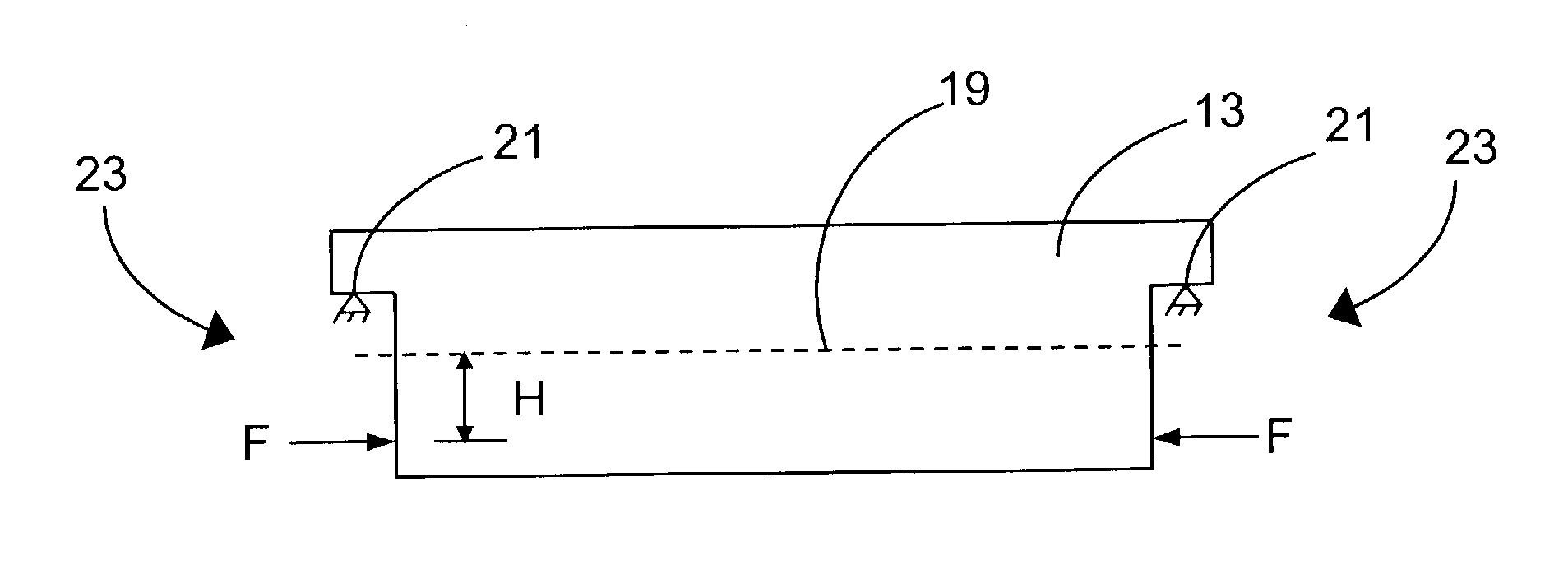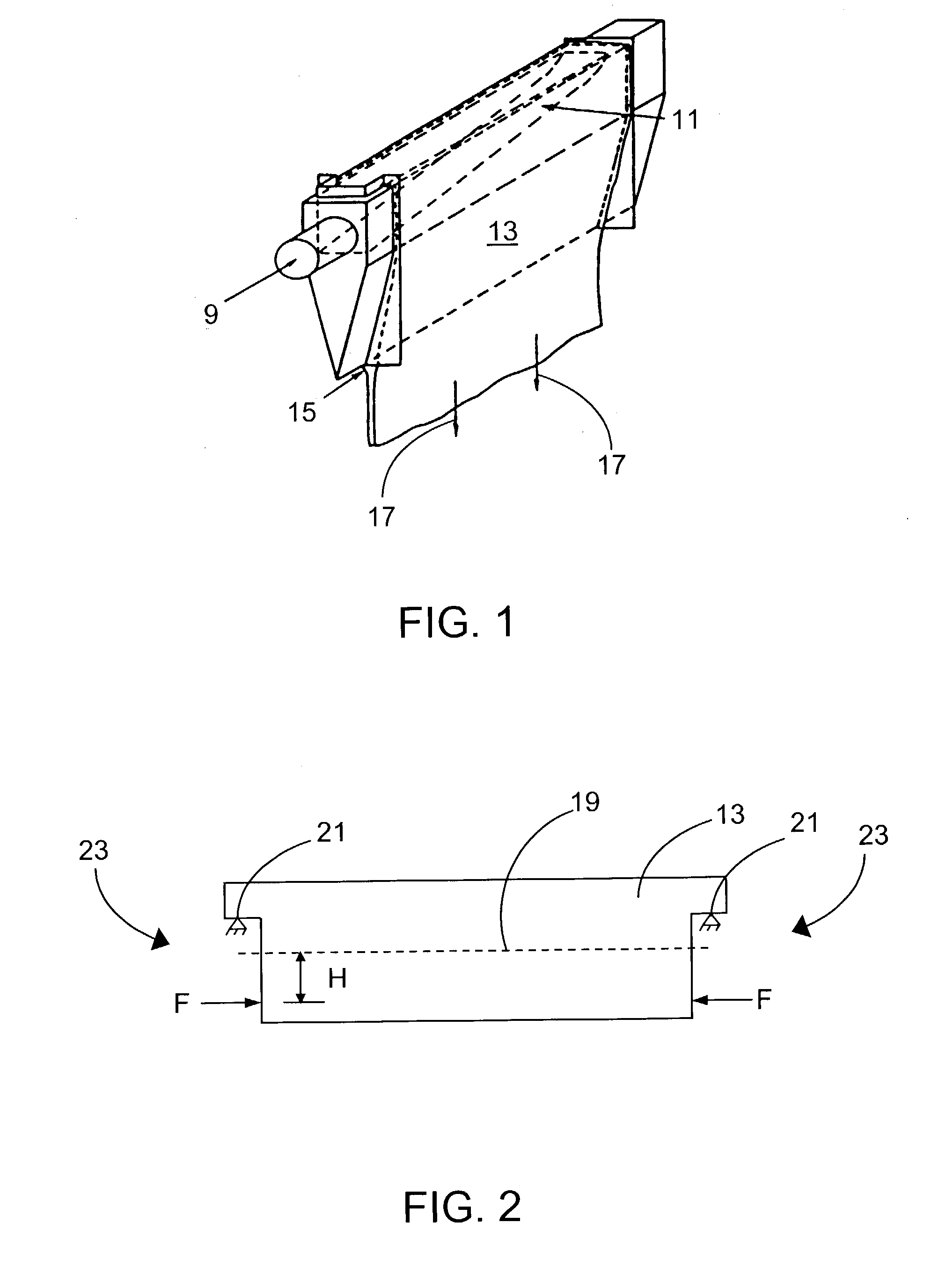Method for controlling fusion pipe sag
- Summary
- Abstract
- Description
- Claims
- Application Information
AI Technical Summary
Benefits of technology
Problems solved by technology
Method used
Image
Examples
Embodiment Construction
[0034] Overflow downdraw fusion pipes composed of isostatically pressed zircon were tested under service conditions with and without the application of sag-controlling axial forces.
[0035] In these experiments, the fusion pipe was symmetric about the frontal plane and the sag-controlling forces were also symmetric about that plane. Specifically, the sag-controlling forces were applied substantially uniformly to corresponding areas at the ends of the pipe, the centers of which were at the frontal plane.
[0036] The force was applied to one end of the pipe using an air cylinder with the other end held stationary. The magnitude of the force generated by the air cylinder was approximately 33,000 newtons and was centered at a point approximately 12 centimeters below the neutral axis. The fixation of the opposite end of the pipe was centered the same distance below the neutral axis. The moments applied to the ends of the pipe were thus each approximately 4,000 newton-meters. The magnitude of...
PUM
 Login to View More
Login to View More Abstract
Description
Claims
Application Information
 Login to View More
Login to View More - R&D
- Intellectual Property
- Life Sciences
- Materials
- Tech Scout
- Unparalleled Data Quality
- Higher Quality Content
- 60% Fewer Hallucinations
Browse by: Latest US Patents, China's latest patents, Technical Efficacy Thesaurus, Application Domain, Technology Topic, Popular Technical Reports.
© 2025 PatSnap. All rights reserved.Legal|Privacy policy|Modern Slavery Act Transparency Statement|Sitemap|About US| Contact US: help@patsnap.com



